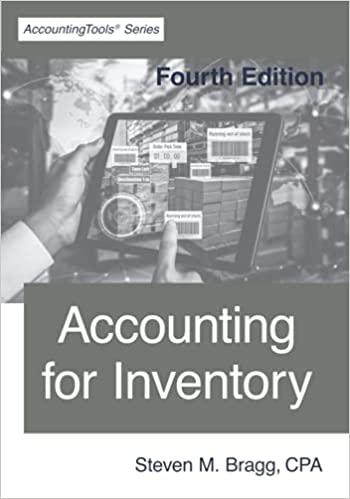Answered step by step
Verified Expert Solution
Question
1 Approved Answer
Please Correct ASAP Problem 12-43 (LO. 10) In January 2019, Pelican, Inc., established an allowance for uncollectible accounts (bad debt reserve) of $70,000 on its

Please Correct ASAP
Problem 12-43 (LO. 10) In January 2019, Pelican, Inc., established an allowance for uncollectible accounts (bad debt reserve) of $70,000 on its books and increased the allowance by $120,000 during the year. As a result of a client's bankruptcy, Pelican, Inc., decreased the allowance by $60,000 in November 2019. Pelican, Inc., deducted the $190,000 of increases to the allowance on its 2019 income statement, but was not allowed to deduct that amount on its tax return. On its 2019 tax return, the corporation was allowed to deduct the $60,000 actual loss sustained because of its client's bankruptcy. On its financial statements, Pelican, Inc., treated the $190,000 increase in the bad debt reserve as an expense that gave rise to a temporary difference. On its 2019 tax return, Pelican, Inc., took a $60,000 deduction for bad debt expense. How is this information reported on Schedule M-3? Click here to access Form 1120, Schedule M-3 These amounts are reported on Schedule M-3, line 32, Part III as follows: the $190,000 book bad debt expense is reported in column (a) , the $ 10,000 X temporary difference is reported in column (b) , and the $ 60,000 tax return bad debt expense is reported in column (d) , Problem 12-43 (LO. 10) In January 2019, Pelican, Inc., established an allowance for uncollectible accounts (bad debt reserve) of $70,000 on its books and increased the allowance by $120,000 during the year. As a result of a client's bankruptcy, Pelican, Inc., decreased the allowance by $60,000 in November 2019. Pelican, Inc., deducted the $190,000 of increases to the allowance on its 2019 income statement, but was not allowed to deduct that amount on its tax return. On its 2019 tax return, the corporation was allowed to deduct the $60,000 actual loss sustained because of its client's bankruptcy. On its financial statements, Pelican, Inc., treated the $190,000 increase in the bad debt reserve as an expense that gave rise to a temporary difference. On its 2019 tax return, Pelican, Inc., took a $60,000 deduction for bad debt expense. How is this information reported on Schedule M-3? Click here to access Form 1120, Schedule M-3 These amounts are reported on Schedule M-3, line 32, Part III as follows: the $190,000 book bad debt expense is reported in column (a) , the $ 10,000 X temporary difference is reported in column (b) , and the $ 60,000 tax return bad debt expense is reported in column (d)Step by Step Solution
There are 3 Steps involved in it
Step: 1

Get Instant Access to Expert-Tailored Solutions
See step-by-step solutions with expert insights and AI powered tools for academic success
Step: 2

Step: 3

Ace Your Homework with AI
Get the answers you need in no time with our AI-driven, step-by-step assistance
Get Started


